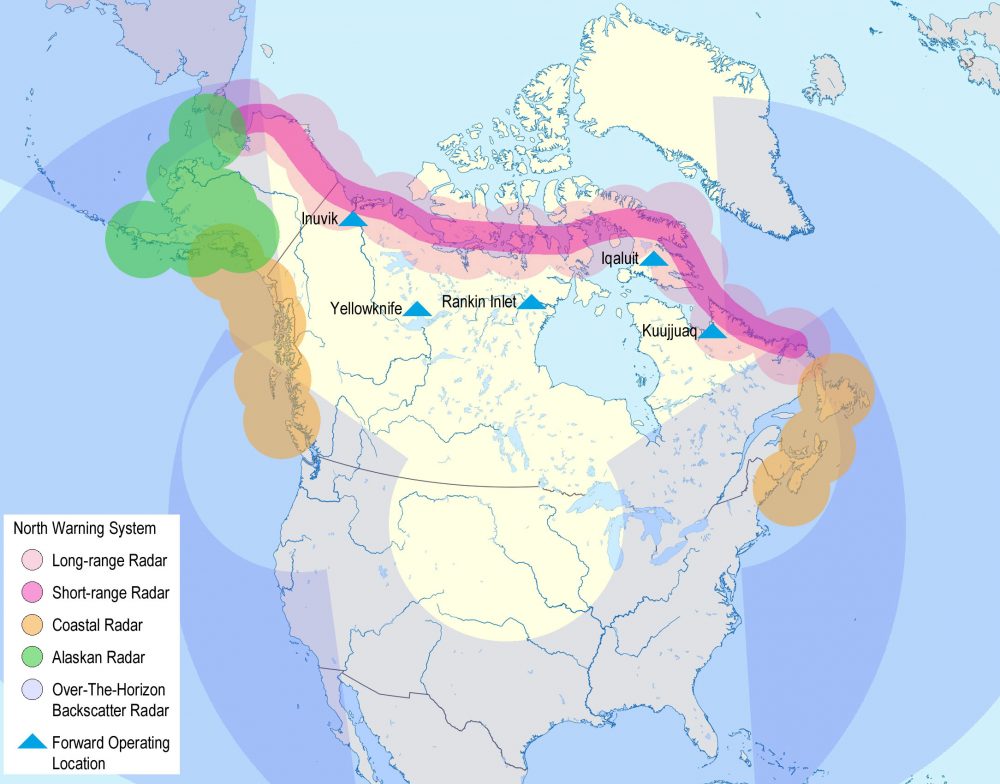Defense expert slams Ottawa for ignoring North Warning System upgrade
Canada's federal government hasn't budgeted for the expensive and sorely needed replacement to the radar system, an expert says.

In a scathing article published on Jan. 14, James Fergusson, a defense expert, says the federal government is dodging the need to replace the aging North Warning System, which is near the end of its lifespan.
“A failure on Canada’s part to move forward relatively quickly could prove disastrous,” said Fergusson, the deputy director of the Centre for Defence and Security Studies at the University of Manitoba.
He made his remarks in a commentary published by the Ottawa-based Macdonald-Laurier Institute, a think tank.
The North Warning System is a string of 47 long– and short–range radar stations that stretch across the Arctic from Labrador to Alaska. It was planned and built between 1985 and 1992 to replace the DEW line, with a lifespan that expires in 2025.
Canada and the United States operate the system through the North American Aerospace Defense Command, or NORAD. Canada pays 40 percent of its operating costs, while the U.S. pays the other 60 percent.
Fergusson said replacing the NWS is likely to cost roughly $11 billion, based on an unofficial estimate he’s seen.
That means, based on the current formula, that Canada’s share of the bill could amount to about $4.4 billion.
But at the same time, it appears as if the Department of National Defence has not provided for the replacement of the NWS in its spending plans for the future.
A DND document called the Defence Investment Plan lists projects like the Arctic and Offshore Patrol Ships project and the troubled plan to replace Canada’s fleet of F-18 fighter jets.
But it contains no reference to the North Warning System.
“The government has apparently not budgeted for NWS modernization in either its 20-year Defence Investment Plan released in 2018 or the 2019 Update of the Defence Investment Plan,” Fergusson wrote.
“Yet NWS modernization is arguably the most immediate and pressing defense requirement for North American defense, and its final costs are likely to blow a hole in the investment plan.”
And Fergusson said the federal government is likely maintaining a policy of silence on NORAD and NWS modernization.
Fergusson cited a story by Murray Brewster that CBC published last August on its website, partly based on leaked information from an anonymous source at DND.
The story reported that the U.S. and Canada have reached a framework agreement on renewing NORAD — but the federal government offered no comment or clarification.
“Despite being provided the opportunity to respond formally, the government instead said nothing publicly. Silence on North American defense cooperation and NORAD is nothing new for this government or its predecessors,” Fergusson said.
That’s likely for political reasons, since cooperation with the U.S. through NORAD always triggers concerns in Canada about loss of Canadian sovereignty.
But Fergusson said that approach may backfire, because in doing so, the federal government loses an opportunity to educate the public about the importance of North American defense cooperation.
“It increases the prospects for a misguided emotional debate, rather than a reasoned one, to the detriment of the government and Canadian defense,” Fergusson said.
And simply replacing the current radar stations will not be enough to bring the system up to date.
That’s because the federal government has extended its zone of defense further north—which means the radar line must also move further north.
“In effect, NWS modernization in terms of simple replacement one for one, and northern movement, is insufficient to meet the new threat environment,” Fergusson said.
It will also need new technologies to counter newer Russian long-range bombers, as well as a new generation of long-range, ground-launched Russian cruise missiles.
That includes the use of “over-the-horizon” radar systems and other technologies.
And in contrast with the 1980s, the federal government must now do meaningful consultation with Indigenous peoples and prepare for lengthy regulatory processes.
That likely means that the government will also have to pay future environmental cleanup costs.
Inuit land-claim-based business entities have already stepped up to lobby for a piece of the action should the U.S. and Canada go forward with NWS modernization.
In Nov. 2018, a group of Inuit birthright corporations representing all four of the Inuit Nunangat regions, from Labrador to the Inuvialuit settlement region, formed a lobby group called the Inuit Development Corporation Association, which seeks contracts for Inuit firms in the provision of services to a new Arctic radar system.
Through a company called Pan Arctic Inuit Logistics Corp., these Inuit corporations had formed a joint venture with a company called ATCO to create the Nasittuq company, which won a contract in 2001 to maintain the North Warning System.
But the PAIL-ATCO joint venture lost that contract in 2014 to Raytheon, after Raytheon came in with a less costly proposal that saved the government more than $13 million a year.
That contract was supposed to expire in April 2019, but there has been no indication of when or how it will be renewed.